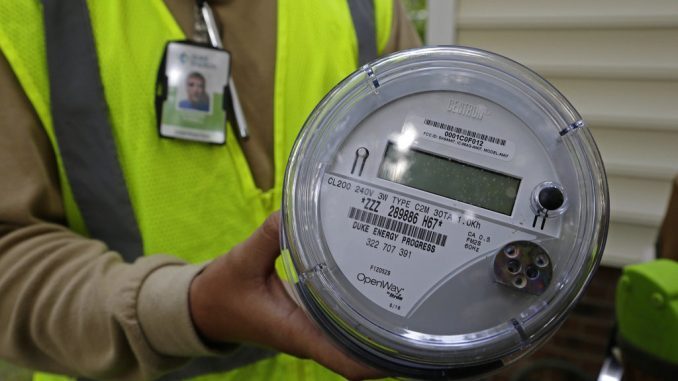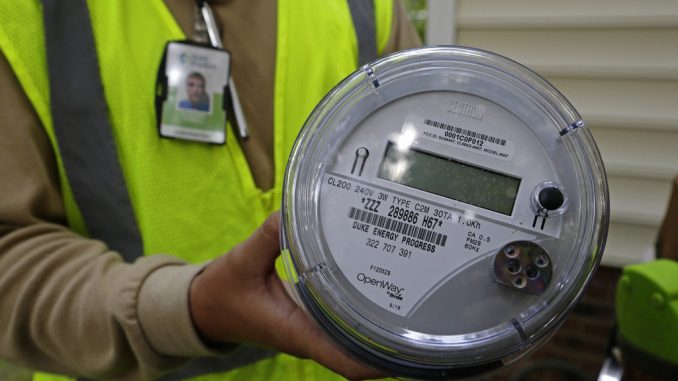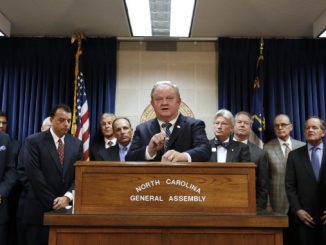

RALEIGH — On Jan. 3, the N.C. Utilities Commission heard from Duke Energy Carolinas officials regarding the rolling blackouts experienced by around half a million customers during Christmas last year.
“Our operators on Christmas Eve were faced with a series of rapidly evolving events during the morning hours making rotating outages necessary to protect the integrity of the grid and mitigate the risk of serious failure affecting a far greater number of customers for longer timelines,” Julie Janson, CEO of Duke Energy Carolinas, told the commission. “We own what happened.”
Also present at the hearing were Sam Holeman, Duke Energy’s vice president of system planning and operations; Kendal Bowman, Duke Energy’s North Carolina president; Preston Gillespie, Duke Energy’s executive vice president and chief generation officer; and Scott Batson, senior vice president and chief distribution officer for Duke Energy.
Janson apologized to the commission, stating, “I want to express how sorry we are for what our customers experienced,” and that “Winter storm Elliott was an extremely powerful event with a unique confluence of high winds, extreme temperature drops, and other conditions that forced us to curtail power as a last resort.
“We regret not being able to provide customers as much advance notice of the outages as we would have liked, and we acknowledge that the outages themselves lasted far longer than we expected,” Janson added.
Duke Energy Carolinas serves 4.5 million customers with around 11% of them finding themselves with power interruptions on Dec. 24-26. Power for most customers was restored on Dec. 24 by 6 p.m., according to Duke Energy.
According to Duke Energy, the problems with the power grid began on the night of Dec. 23 when customer power use was outstripping predictive models. Starting at around midnight and lasting through Christmas Eve, the company’s energy output dropped by 1,300 megawatts, representing 3.6% of its overall energy generation.
As morning came on Dec. 24, the below-freezing temperatures spreading across the state increased demand, causing several power plants to operate at a reduced level. Some of the plants impacted were three top Duke facilities, including a natural gas plant in Rockingham County and two coal plants; one in Caswell County and another in Person County.
None of the impacted energy facilities went offline, however, the output of the Dan River Combined Cycle Station located in Rockingham County reportedly fell to half the electricity it usually can produce.
In order to maintain the power grid, rotating outages were employed. But things became more complicated as an apparent software issue hindered the typical automatic power restoration. As a result, the outages continued and manual assistance was needed.
Sometime on Dec. 24, the North American Electric Reliability Corporation (NERC) was apparently notified by Duke Energy of the situation. Duke Energy’s situation placed them at NERC’s “Energy Emergency Level 3,” which means a grid interruption is “imminent.” The Level 3 alert wasn’t lifted until Dec. 26.
NERC, a nonprofit, is an “international regulatory authority whose mission is to assure the effective and efficient reduction of risks to the reliability and security of the grid.”
Bowman, Duke Energy’s North Carolina state president, told the commission, “At that time, we made the only decision that we could. For the first time in our company’s history, we began rolling service disruptions.”
Duke officials said they tried to buy emergency power capacity from other states, but their requests were denied due to other utilities already under strain due to cold weather spreading nationwide.
The North Carolina Electric Cooperatives did what they could to coordinate with Duke to reduce the load on the grid.
“In coordination with Duke Energy, electric cooperatives statewide implemented emergency load shed requirements that resulted in temporary interruptions for some cooperative members to reduce load and stabilize the grid,” Manager of Public Relations for North Carolina’s Electric Cooperatives Chris Nault told North State Journal in an email.
“The cooperatives communicated these interruptions to consumer-members through a variety of channels and also encouraged members to conserve,” Nault said. “Through this extreme event, cooperatives utilized all grid assets: generation plants, load response programs, battery energy storage systems and other distributed sources.”
Customers subscribing to Duke Energy updates did receive some messages about the power shortages, but the company was criticized for the way the outages were relayed to the public. Additionally, most customers were told to expect a brief delay, yet the outages persisted much longer.
The power company also tweeted a warning that said, “As extreme temps drive unusually high energy demand across the Carolinas we have begun short, temporary power outages. These emergency outages are necessary to protect the energy grid against longer, more widespread outages.”
The tweets from Duke Energy all contained a list of ways for customers to conserve energy and take the pressure off the power grid.
Janson apologized for the communication issues, stating, “We regret not being able to provide customers with as much advance notice of the outages as we would have liked and we acknowledge the outages themselves lasted far longer than we expected.”
During the commission hearing, Duke officials also admitted some of the information sent out to customers was inaccurate but blamed the faulty information on a software issue that impacted the company’s automatic power restoration system.
Gov. Roy Cooper also met with Duke Energy officials to express his “surprise” at the outages. His press release also criticized the company for making bad energy forecasts that were “wrong and significantly underestimated North Carolinians’ energy needs.”
According to a press release from Cooper’s office, the governor “noted that the impacted facilities leading to the power outages appear to be fossil fuel facilities” and he asked, “if renewable energy resources performed as expected.”
Duke officials stated that renewable energy resources performed as expected and that the outages did not occur because of renewable energy generation, per the governor’s press release.



